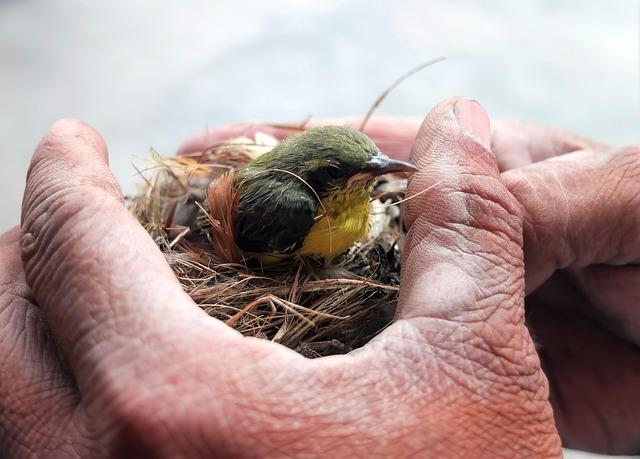Welcoming a rescue dog into your home is a journey filled with hope, compassion, and the promise of a second chance. However, dogs with difficult pasts often carry emotional and behavioral scars that require patience and understanding to heal. This article aims to guide you through the rewarding process of training a rescue dog with a challenging history. By blending proven techniques with empathy and consistency, you can help your new furry friend build trust, confidence, and a sense of security in their new environment. Whether you’re a seasoned pet owner or a first-time adopter, these insights will equip you with the tools needed to nurture a loving and harmonious relationship with your rescue dog. Let’s embark on this transformative journey together, creating a brighter future for both you and your canine companion.
Building Trust with Patience and Love
When welcoming a rescue dog with a challenging history into your home, it’s crucial to approach the relationship with patience and unconditional love. Understanding their past traumas and the behaviors that may arise from them is key to fostering trust. Dogs who have experienced neglect or abuse often react with fear or aggression, but with gentle guidance, they can learn to feel safe and secure. Focus on establishing a calm environment where your dog can gradually adapt at their own pace. Offer consistent routines and avoid sudden changes, as predictability helps them feel more at ease.
- Create a safe space: Designate a quiet area in your home where your dog can retreat to when feeling overwhelmed.
- Use positive reinforcement: Reward desirable behaviors with treats and praise to encourage trust-building interactions.
- Be patient: Progress may be slow, but celebrating small victories can lead to significant improvements over time.
- Respect their boundaries: Allow them to initiate contact and explore their new surroundings without pressure.
By showing empathy and understanding, you’ll be laying the foundation for a deep, trusting bond. Remember, the journey may be long, but the love and loyalty of a rescue dog are truly rewarding. With every gentle gesture, you’re teaching them that they are safe and cherished.
Creating a Safe and Consistent Environment
When working with a rescue dog that has endured a challenging past, establishing a nurturing and predictable environment is crucial. Dogs thrive on routine, and for those who have experienced trauma, a stable setting can be particularly comforting. Begin by setting a consistent schedule for feeding, walks, and bedtime. This routine helps your furry friend understand what to expect and reduces anxiety. Use gentle, positive reinforcement to encourage desired behaviors, such as treats, praise, or playtime. Avoid sudden changes in your dog’s daily activities, as this can lead to confusion or stress.
Key elements to consider for creating a safe haven include:
- Designated spaces: Ensure your dog has a cozy, designated spot where they can retreat and feel secure.
- Calming aids: Consider using calming music or diffusing essential oils like lavender to soothe your pet.
- Consistent commands: Use the same words for commands to avoid confusion and foster trust.
- Safe socialization: Gradually introduce new people and environments, ensuring positive experiences each time.
By maintaining consistency and safety, you lay the foundation for your rescue dog to heal and grow in confidence, ultimately helping them to leave their difficult past behind.
Understanding Behavioral Triggers and How to Manage Them
Understanding the root causes of your rescue dog’s behaviors is essential in helping them overcome their past. Dogs with challenging histories often have specific behavioral triggers that can evoke fear, anxiety, or aggression. Identifying these triggers is the first step towards managing them effectively. When you notice a pattern, such as your dog reacting negatively to certain sounds, people, or situations, take note of these cues. Recognize that these reactions are not just stubbornness or disobedience, but a response to past experiences that might have been traumatic.
To manage these triggers, consider the following strategies:
- Desensitization: Gradually expose your dog to the trigger in a controlled environment, starting with low-intensity exposure and slowly increasing it as they become more comfortable.
- Counter-conditioning: Pair the trigger with something positive, like treats or affection, to help your dog associate it with a pleasant experience instead of fear or anxiety.
- Consistency: Maintain a consistent routine to provide your dog with a sense of stability and security, which can help reduce stress.
- Patience and Compassion: Remember that progress can be slow, and it’s important to approach training with understanding and empathy.
By focusing on these strategies, you can help your rescue dog build trust and confidence, ultimately leading to a more harmonious relationship.
Positive Reinforcement Techniques for Lasting Change
When working with a rescue dog who has faced challenges in the past, using positive reinforcement can be transformative. This approach centers on rewarding desirable behaviors, making it more likely that these behaviors will be repeated. Start by identifying what motivates your dog—this could be treats, affection, or play. Consistency is key, so ensure that everyone involved in the training uses the same cues and rewards. Gradually, your dog will begin to associate these positive experiences with the behaviors you want to encourage.
- Use Treats Wisely: Opt for small, high-value treats to maintain interest without overfeeding.
- Praise and Affection: Sometimes, a warm voice and a gentle pet are more effective than any treat.
- Play as a Reward: Incorporate favorite games or toys as part of the reward system.
- Patience is Paramount: Remember, progress might be slow, but each step forward is a victory.
By focusing on what your dog does right, rather than punishing mistakes, you build a foundation of trust and understanding. This not only helps your dog to feel safe and loved but also fosters lasting behavioral change, paving the way for a harmonious relationship.

